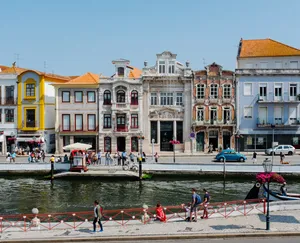Foodies’ Guide
Turkey's name is always uttered among the top 10 choices regarding the world's wealthiest cuisines — and rightfully so. Having been the home to countless civilizations over millennia, from the Hittites and Byzantines to the Ottomans and Central Asian Turks, Turkish cuisine is as varied and colorful as it gets.
From olive-oil-based dishes called "zeytinyağlılar" and an endless array of mezes to decorate rakı tables to juicy and spicy kebabs that can knock your socks off, every region in Turkey offers you different tastes wherever you go.
World-Renowned Tastes
- Döner
Call it döner or döner kebab; chances are, if you have ever been to Europe (and not necessarily Turkey), you have heard of this dish. Made of beef or chicken roasted on a vertical rotisserie, which is then shaved off bit by bit, this type of kebab is served in bread or rolled into a "dürüm" with lavash.
- Lahmacun
A Turkish delicacy for over 300 years, lahmacun is a staple dish for Turkish restaurants and the top choice for take-out. It is made of a thin and crispy dough topped off in a thin layer of minced meat (lamb or beef), chopped onions, garlic, peppers, tomatoes, and parsley. It is often referred to as the "Turkish pizza."
- Pide
When one mentions lahmacun, it would be unfair not to say pide. The thicker cousin of lahmacun, pides are more boat-shaped with the sides folded in, and it doesn't skimp on toppings — meat, chicken, pastırma, and vegetables, cheese, sucuk, and an egg is the best combination for the famed Bafra pide from Samsun in northern Turkey.
- Iskender kebab
This famed dish hails from Bursa and is why so many Istanbulites go on daily trips to this city. On a bed of pita squares, tender döner pieces are smothered with fresh tomato sauce before being doused in aromatic butter to create an explosion of flavors in your mouth. This is one dish you must try when in Turkey.
Street Foods
- Simit
Whether you are walking down the streets of Turkey or checking a nearby bakery, you will likely see these sesame-encrusted bread rings anywhere you go. Turks most often prefer to consume them with something savory such as cheese or olive spread. When in doubt, eat alongside a glass of Turkish tea.
- Çiğ köfte
The kind you see on the streets are vegetarian as they only contain fine bulgur, parsley, onions, and a mix of tomato and pepper paste. It is served with lots of greens, lemon, and pomegranate molasses and can be eaten either in lavash or lettuce leaves.
The authentic way of preparing this dish is a very tedious task that involves raw meat. The meat is kneaded into a dough with bulghur and isot (very hot paprika flakes that come from Şanlıurfa), which helps the meat "cook" with the spice's heat the constant kneading.
Night Out Foods
- Kokoreç
When you hear that this dish is made from lamb intestines, you will likely want to stay away from it as far as possible. With all the seasoning and spices and the way it is chopped up into tiny pieces after cooking slowly over a charcoal fire on a rotisserie, you will hardly believe that is the main ingredient once you take a bite of this sandwich. It is one of the best street foods to have after a night of drinking.
- Midye dolma
This is the go-to treat for Turkish coastal towns. It is mussels mixed stuffed with spicy rice and doused in lemon. They are the perfect bite-sized snacks and can be found in Bodrum, Izmir, and Istanbul, among many other cities.
Breakfast Foods
- Gözleme
A classic Turkish breakfast with olives, cheeses, jams, honey, pastırma, sucuk, and eggs will always be the number 1 choice, gözleme is the quick and easy food to eat packed full of flavor and made of hand-rolled dough filled with ingredients, such as minced beef, cheese, potatoes, or spinach. This Anatolian flatbread grilled on a particular type of grill called sac (saj), usually made of cast iron and resembles a massive overturned wok.
- Boyoz
Boyoz is the typical breakfast food for those from Izmir. This incredibly flaky pastry bun is consumed alongside a boiled egg or two in the morning and a nice cup of Turkish black tea.
Regional Specialties
- İçli köfte
Gaziantep, Şanlıurfa, Diyarbakır, and many other provinces enjoy this delicacy on the regular. These meatballs comprise a shell of thin bulgur or semolina stuffed with spicy ground beef and nuts. They can be boiled but most often served fried.
- Mantı
Like dumplings or ravioli, these tiny homemade pastries are filled with spicy ground beef, cooked in salted water, and served with garlic yogurt or a buttery red pepper flake sauce. The most famous kind is from Kayseri in central Anatolia.
- Alinazik kebab
A terrible and literal translation of this dish would be "Ali-polite," in Ottoman times, it meant "delightful dish." This kebab is a Gaziantep province specialty and comprises sauteed lamb cut in cubes, lying on a smoked and pureed eggplant bed.
- Kuymak - mıhlama
Although, in essence, both contain cornmeal and cheese, if you say they are the same dish to anyone from the Black Sea, be prepared to be shot daggers. Kuymak is native to Trabzon, while mıhlama is to Rize. This breakfast food decorates Instagram feeds with its stringy and stretchy consistency.
- Yaprak ciğer
If you stop by Edirne in the Turkish Thrace, everyone will tell you to try this. Served with pepper, onion, bread, spices, and a special sauce, this type of liver is cut paper-thin.
Vegan Options
- Mercimek köftesi
By combining red lentils, thin bulgur, onions, and pepper/tomato paste, this vegan treat is your go-to cold appetizer or meze, as they say in Turkish, and is the perfect picnic and party food. Turks consume this delicacy by drizzling pomegranate molasses or squeezing lemons on top, wrapped in lettuce leaves, serving in an oblong shape rather than a classic round meatball. It is said to have originated in southeastern Turkey and is consumed widely in Mardin and Gaziantep.
- Kısır
Kısır is a classic bulgur salad most often served at neighborly gatherings, parties, and summer events. It is prevalent in southern Turkish cities such as Adana, Mersin, Antalya, and Kilis. Made with a particular type of thin bulgur, tomato paste, green onions, tomatoes, cucumbers, parsley, and mint, this salad is not complete without a good dousing pomegranate molasses (nar ekşisi) and lemon juice, served alongside crispy lettuce leaves.
Desserts
- Baklava
Did you know that baklava was the first Turkish product to be granted protected status by the European Union? This Gaziantep specialty is loved much that over 2,000 tons are produced to be sold across the country every day. This crispy yet syrupy delight is most famous for its finely crushed pistachios and layers upon layers of phyllo dough. Walnut baklava is also a close contender.
- Katmer
As if baklava was not impressive enough, the people of Gaziantep thought they'd introduce to the world another dessert featuring the city's famed pistachios. Like baklava, katmer is a layered crispy phyllo dough dessert but is served warm and has layers of kaymak (clotted cream) inside, which is why it is referred to as crème de la crème. It is a rather decadent dessert, but locals will often eat this for breakfast.
- Maraş ice cream
It's the ice cream you can eat with a knife and fork. You'll often see this particular type of mastic ice cream served by mustached-men wearing Ottoman fezzes and playing countless tricks on customers. Hailing from Kahramanmaraş, this ice cream is chewy, thick, and creamy, containing "salep" powder from the tubers of orchids.











Member discussion